
Anatomy and physiology teaches you about the bones, muscles and various organ systems. The study of Human Anatomy and Physiology is useful for both individuals as well as fitness instructors, besides nursing/medical students.
There are several reasons why knowledge of these topics is important to those in the fitness industry.
- A person suffering from diabetes or hypertension is a member of your gym, and without adequate knowledge of how exercise affects these people, you (the fitness instructor) suggests exercises. What if the blood vessels of the person ruptures while exercising? Do you get the risk?
- A person wants to become a model (with well tones muscles) or someone wants to become a power-lifter. How can you suggest exercises without knowing the various parts, bones, muscles of the body?
- Someone, who intends to go for mountaineering goes to a fitness trainer. Without adequate knowledge about the cardio vascular system, how an the trainer suggest exercises for the person.
These are just a few scenarios, there’s another big topic related to injuries (sprains, strains, and other injuries).
So What Exactly is Anatomy and Physiology?
In order for the human body to work properly, it must have all its parts intact, and those parts need to function optimally.
Here’s what the two medical terms mean:
Anatomy: Its the study of the structure of the human body.
Physiology: Its the study of the function of each of these structures.
Know Your Anatomy
Standard Anatomical Position
Standard Anatomical Position is used as reference to determine position of various organs in body.
For humans, the anatomical position has a person standing erect, with feet facing forward, the arms at the sides, palms of the hands facing interior, and fingers pointing straight down.
Here is the meaning of the various terms:
- Anterior & Posterior: Front & Back
- Medial & Lateral: Closer or Away from Midline
- Distal & Proximal: Away or Near to Origin
- Superior & Inferior: Above or Below
- Central & Peripheral: Deep & Superficial
Next we take a look at the Anatomical planes: Saggital, Coronal, Transverse.
- Mid Saggital: Equal Parts (Left & Right)
- Para Saggital: Unequal Parts
- Coronal or Frontal Plane: Anterior & Posterior Halves
- Transverse: Superior & Inferior Parts
Types of Body Movements

Various types of body movements:
- Flexion: Decreasing the angle of the joint
- Extension: Decreasing the angle of the joint up to 180 degrees
- Hyper-extension: Decreasing the angle of the joint above 190 degrees
For example: Moving the hand ahead of shoulder joint is flexion of shoulder joint and taking it behind is hyper-extension of shoulder joint. Taking it down is extension of shoulder joint.Note: Hyper flexibility at a joint usually indicates lax (weak/small) muscles. - Abduction: Taking the limbs away from mid-line of body is abduction
- Adduction: Taking the limbs towards the midline of body is adduction
Example: Horizontal abduction and adduction is the flying movement of both the upper limbs. - Medial Rotation: Rotating a limb towards the central access is medial rotation (also known as Internal rotation)
- Lateral Rotation: Rotating a limb away from the central access is lateral rotation (also known as External rotation)
- Scapulary Movements:
Elevation – Depression
Abduction (Protraction) – Adduction (Retraction)
Internal – External - Lateral Flexion
Bending Spine sideways
Bending neck sideways - Supination: Palms Up
- Pronation: Palms Down
- Rotation: Moving around the central axis in 360° is rotation
- Lateral Rotation: Twisting the torso in transverse plane towards the back is lateral rotation
- Contra-Lateral Rotation: Bringing it back to the front is contra-lateral rotation
Example: Lateral and contra-lateral rotation of spine and head. - Foot movements:
Plantar flexion: moving the toes away from the body
Dorsiflexion: Moving the toes closer to the body
Inversion: Turning the foot towards the big toe.
Eversion: Turning the foot towards the smallest toe - Wrist movements:
Radial flexion: Turning the palms towards Radius
Ulnar flexion: Turning the palms towards Ulnar - Thumb movement:
Thumb-finger-opposition: Touching any finger with the thumb - Circumduction: Combination of Abduction, Adduction, Flexion, Extension (at shoulder and wrist)
Anatomy of Skeletal Systems (Bones)
Remember the movie Munnabhai MBBS? There’s a scene in that movie where Munna tells Circuit (after attending Medical college) that there are 206 bones in a human body. And they joke that they have been breaking bones for so many years and never realised it.
The number of bones in a human body is around 275-300 after birth, but it reduces to 206 by the time a human being reaches the age of 25. Ossification is the fusion of bones together, Starts from 8+ weeks of pregnancy and continues till 25.
Bones or skeleton can be divided in 2 parts: Axial & Appendicular.
Axial Skeleton
Axial Skeleton: Head (Skull), Neck & Trunk (Torso)
Skull: 8 Cranial & 14 Facial Bones (Total 22)
Rib Cage: 24 Ribs & 1 Sternum (Total 25)
Vertebral Column: 7 Cervical (Neck), 12 Thoracic (Ribs), 5 (Lumbar), 5 (Sacrum), 4 Coccygeal (last 2 form base of lower back) – (Total 33)
Total bones in Axial Skeleton: 80
Appendicular Skeleton
Appendicular Skeleton: Upper & Lower Limbs
Upper Limbs
Shoulder/Pectoral Girdle: 2 Clavicles, 2 Scapula (Total 4)
Arms: 2 Humerus
Forearms: 2 Radius (Running towards thumb), 2 Ulna (Running toward little finger) – (Total 4)
Wrist Hand: 16 Carpals, 10 Meta Carpals, 28 Phalanges (Total 54)
Hip/Pelvic Girdle (Lower Limbs)
2 Hip bones
Thighs: 2 Femur (Longest and strongest bone in human body)
Legs: 2 Patella, 2 Tibia, 2 Fibula (Total 6)
Ankle Feet: 14 Tarsals, 10 Metatarsals, 28 Phalanges (Total 52)
Total bones in Appendicular Skeleton: 126
Total bones in Human Body = Total bones in Axial Skeleton (80) + Total bones in Appendicular Skeleton (126) = 206
Bones: Types & Functions
Types Of Bones
- Long Bones: These are longer than wider, articulating cartridges at both ends. Examples – Femur, Tibia, Fibula, Humerus, Radius, Ulna
- Miniature long bones: These are long bones but miniature in appearance. Examples – Metacarpals, Metatarsals, Phalanges
- Modified Long Bones: For example, Clavicle has modified shaft and has a special purpose of supporting the hanging upper limbs into it. (common case of fracture in old age)
- Short Bones: Cuboid, short, shapeless. Examples – Carpals, Tarsals
- Irregular Bones: Irregular and do not fit in any category. Example – Vertebrae
- Flat Bones: Like a plate with 2 prominent surfaces. Examples – Scapula, Ribs, Sternum, Skull Bones
- Sesamoid Bones: These are in the form of a nodule embedded in tendon. Examples – Pisiform, Patella

Here are some of the important functions of bones in the human body.
- Movement: Without bones, the human boy would be an immovable mass
- Store house: Calcium, phosphorus and other minerals are stored in bones
- Blood Production: RBCs (red blood cells), WBCs (white blood cells), Platelets are produced in bone arrows.
- Structure: Provides a framework to the human body
Bone Health in Women
Womens’ health and weight training: In females, post the age of 42-45, the bone health and calcium levels drop. Also, during menstrual cycle (3-5 days), the calcium levels in a female’s body drops. during those 3-5 days, make sure you do light (low-intensity, low-volume) exercises.
Types of Joints (Bone Joints)
Classification / Types of Joints (between bones in the human body).
Joints enable bones (forming the joints) to move relative to each other. Here are the main types of joints.
Types of Joints
Di Arthrosis (Synovial Joint)
- Two-three bones come together to form a synovial joint, stabilized by a ligament.
- In synovial joints, synovial cavity is present which has synovial fluid, which makes the joint freely movable (smooth articulation). These are freely or highly articulating joints.
Amphi Arthrosis
- Two bones get connected with cartilaginous tissue. They have limited articulation.
- Example: Joints between vertebrae, Joints between sternum and ribs
Suture Joint (Syn Arthrosis)
- Found where no articulation (movement) happens.
- Two to three bones come together and get fused.
- Bony markings are present.
- Example: Skull bones, hip bone, sacrum, coccyx.
Note: “Strength is inversely proportional to flexibility”
Types of Synovial Joints
- Gliding Joint: Radio-Ulnar joint, Joint between Sternum & Ribs
- Hinge Joint: Elbow, Fingers, Toes
- Pivot Joint: Joint between skull and first vertebrae
- Condyloid joint: Carpals & Tarsals
- Saddle Joint: Base of Thumb
- Ball & Socket: Shoulder of Hip Joint
- Compound: Knee Joint
Connective Tissue
Any tissue in our body that connects one part to another is connective. Here are the different types of Connective Tissues. Connective Tissue is the most widespread and abundant type of tissue in the human body.
Cartilage
Flexible and rubbery, not as rigid as bone, and not as soft as muscle; connects bone to bone. Does not contain blood supply, and that is the reason why cartilage injuries either never heal or take long time to heal. Example – Vertebral column, knee.
Tendon
It is tough and band like, it is a fibrous tissue and it does not contain blood supply; connects muscle to bone. An injury to a tendon can lead to complete impairment of movement, because tendons and muscles work together to move the bones)
Ligament
They are tough, slightly elastic and fibrous; connects bone to bone. They have very little blood supply and that’ why they heal, but they can take years to heal.
Aponeurosis
It is very similar to a tendon but it is very thin and flat. It can connect either bone to bone or muscle to muscle.
Understanding Muscular system: Here’s a beginner guide on muscle types, properties and its functions.
Types of Muscles
- Cardiac muscles (Heart)
- Smooth muscles (Intestines)
- Skeletal muscles (Voluntary & Striated)
Functions of Muscles
In addition to assisting in structural and movement-related functions, there are many more things that our muscles do.
Here’s more about the functions of our muscular system:
- Movement: Due to muscle contraction, movement happens at the joints. The muscular system helps in producing voluntary gross and fine movements. The movement of body is controlled by alternate contractions and relaxations of muscles.
- Joint Stability: Muscles old the bones and joints in place.
- Posture: Muscles holds our body upright. Even though our bones provide the frame, its the skeletal muscles and their associated tendons that hold our bones together and keep them in place. Even in a static posture, several skeletal muscles of the trunk, neck and legs must remain in a contracted state to support your body and head.
- Blood Circulation: Your heart is the hardest working muscle in your body. With each contraction, blood is pumped through your circulatory system, supplying oxygen and nutrients to the various body organs and tissues.
- Heat Production: It helps maintain normal body temperature. In cold temperatures, it shivers to produce heat. In warm temperatures, it sweats and keeps us cool.
Short film explaining the different motional functions of muscles. Generates heat, maintains posture, produces body movements – extension, hyper-extension, flexion, rotation, abduction, pronation, circumduction, opposition, inversion, eversion, lateral & medial rotation, etc.

Properties of Muscles
Here are some of the properties of Muscles:
- Contractible: Ability to shorten or contract
- Extensible: Ability to stretch in response to force
- Elasticity: Returning to normal resting length after the force is removed.
- Tonicity: Ability to get shorter and harder upon training is tonicity
- Excitability/Irritability: ability to respond to stimulus, ultimately produces muscle contraction.
Watch: Physiological Properties of Muscles
Muscle learns specific tasks /movements through repetitions. When a movement is repeated over time, a long term muscle memory is created for that movement, eventually that movement can be performed without conscious efforts.
Examples of muscle memory include typing on a keyboard, playing a musical instrument, riding a bicycle, etc.
Types of Muscle Contractions
Muscle contractions are defined by the changes in the length of the muscle during contraction. There are basically three types of muscle contractions:
Isotonic (tension remains same)
In Isotonic contractions, force is generated by changing the length of the muscle (lengthens and shortens).
There are two phases in this muscle contraction:
- Concentric contraction (Positive phase): When muscle length shortens and weight is against gravity
- Essentric contraction (Negative phase): Muscle lengthens and weight is towards gravity in a controlled manner.
Example: Most weight training exercises.
Isometric (same distance or not moving)
In Isometric Contraction, force is generated without changing the length of the muscle. Length of the muscle remains the same throughout the contraction.
Example: Plank exercises.
Isokinetic (speed remains same)
Similar to Isotonic contractions, Isokinetic contractions produce movements of a constant speed. Both the phases ‘Concentric’ & ‘Essentric’ are controlled by a machine or a therapist. This type of muscle contraction is usually used for rehabilitation.
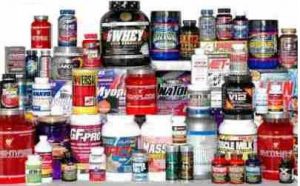

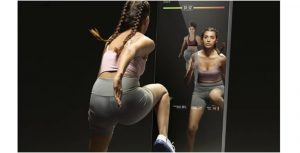

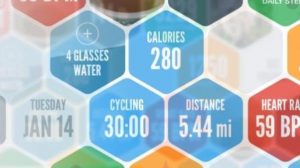
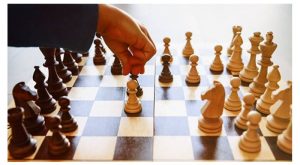
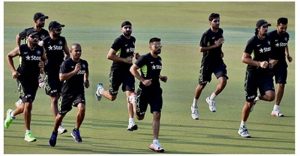
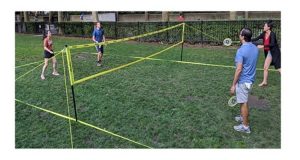

Leave a Reply